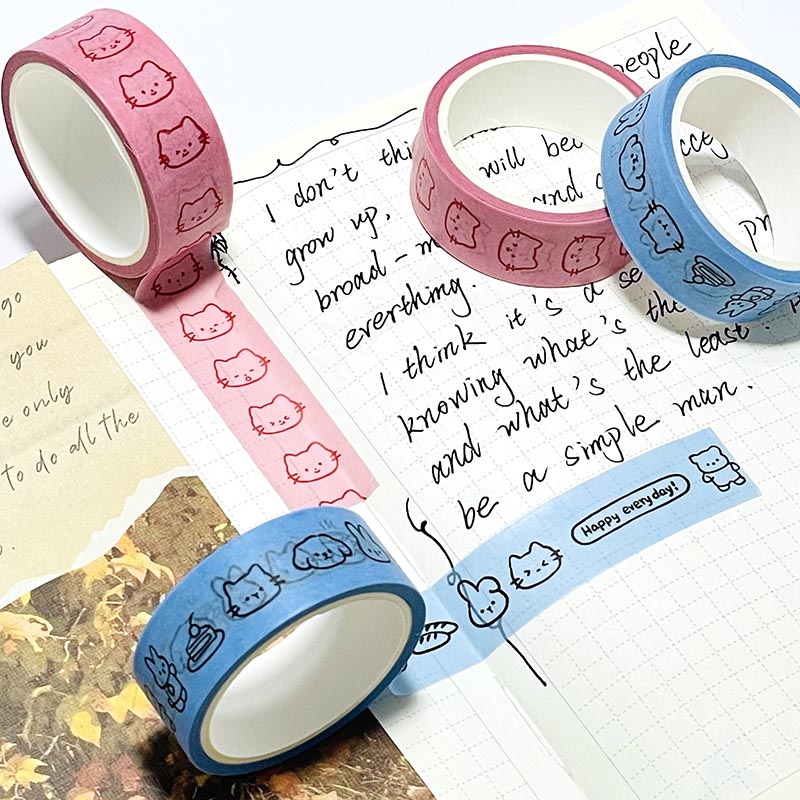Comprehensive Guarante To Meet Your Diverse Needs
High-definition printing: bright colors and clear patterns
High-quality and durable: wear-resistant and stretch-resistant

2025-05-09 18:19:24
Washi Tape, known for its delicate texture, beautiful designs, and easy-to-tear properties, has become a beloved material for crafters, stationery lovers, and DIY enthusiasts around the world. But beyond its modern-day popularity, Washi Tape has deep historical and cultural roots in traditional Japanese paper-making. To understand the significance of washi tape, it’s essential to explore the origins and evolution of "washi" — the very paper from which it is made.

The word "washi" means “Japanese paper.” Unlike Western paper, which is typically made from wood pulp, washi is traditionally handcrafted from natural plant fibers, especially the inner bark of the gampi tree, mitsumata shrub, or paper mulberry (kozo). The process of making washi has been passed down through generations and is considered an art form in itself. In fact, UNESCO designated Japanese washi as an Intangible Cultural Heritage in 2014.
Washi is known for being incredibly strong despite its lightness. It resists tearing, aging, and even insects, making it ideal for a wide range of uses — from religious rituals and shoji screens to calligraphy, origami, and decorative art.
Washi tape as we know it today was born much later, in the early 2000s. It began with a small Japanese company called Kamoi Kakoshi, which originally specialized in industrial Masking Tape. In 2006, the company received a letter from a group of artists who had been using their masking tape for crafts. Inspired by this unexpected creative application, Kamoi Kakoshi collaborated with designers to create the first decorative washi tape brand, mt (masking tape).
The first line of mt tape featured soft pastel colors and minimalist patterns, aligning with Japanese aesthetics of simplicity and subtle beauty. The tapes quickly gained a loyal following and sparked a global trend. Today, washi tape is available in thousands of designs — from florals and geometric shapes to anime characters and seasonal themes.
Washi tape’s popularity is not only due to its visual appeal and functionality but also because it reflects the Japanese appreciation for craftsmanship, imperfection, and nature. Many designs incorporate traditional motifs such as sakura blossoms, koi fish, waves, or wabi-sabi-inspired patterns that celebrate asymmetry and transience.
Moreover, washi tape aligns with the values of mindful creativity and intentional beauty in daily life. Its gentle adhesive makes it ideal for journaling, gift-wrapping, labeling, and decorating — allowing users to add a personal, artful touch without permanence or waste.
Since its debut, washi tape has evolved far beyond Japan. It is now a global phenomenon, with major craft stores and online platforms offering international brands and limited-edition artist collaborations. Yet the heart of washi tape remains rooted in its heritage — in the spirit of handmade beauty and cultural storytelling through paper.
Japanese companies continue to innovate, producing gold-foiled, die-cut, UV-printed, and even scented Washi Tapes. These modern features blend seamlessly with the legacy of traditional craftsmanship, ensuring that washi tape remains both a nostalgic and contemporary art medium.
Washi tape is more than just a craft supply — it is a bridge between past and present, tradition and creativity. Its origins in centuries-old Japanese paper-making culture add depth and meaning to every strip. Whether used in a minimalist bullet journal or a vibrant piece of wall art, washi tape carries with it the legacy of Japanese artistry and the enduring value of thoughtful design.
2/F, No. 23, Um Yuan Xin Road, Wentang Community, Dongcheng Street, Dongguan City, Guangdong Province, China
+86 137-1733-9986 +86-0769-22299566